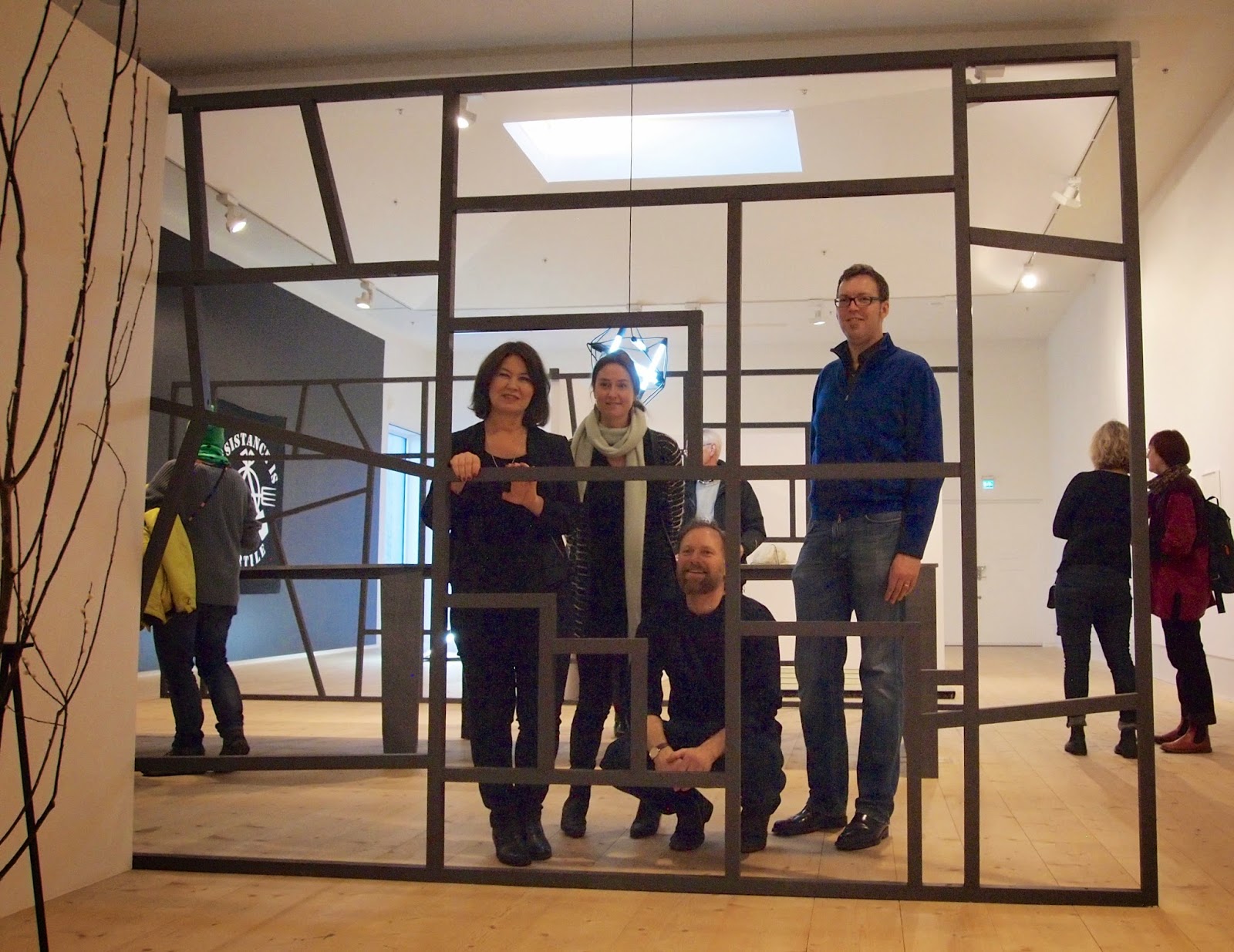Paper made from Mulberry bark, branch with moss, Hydrangea.
Paper is also used in ikebana arrangements, in traditional arrangements usually folded as origami. In contemporary ikebana the paper is treated as a material in its own right, emphasizing the special qualities and texture of the paper.
In the first arrangement in this posting I've used paper made from Mulberry bark. A shape is created by intertwining paper with different colours. This kind of paper is easy to shape and goes well with sculptural arrangements.
The second and third arrangement uses a machine made square paper with the center cut into stripes. The same paper is used first in a nageire vase and then in a modern moribana arrangement placed directly on a board.
Paper with cut stripes, Hydrangea, Ornithogalum, Aspidistra leaf.
Paper with cut stripes, Hydrangea, Aspidistra leaf.











































